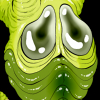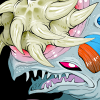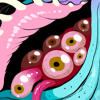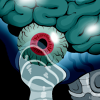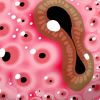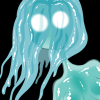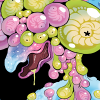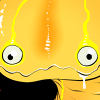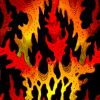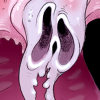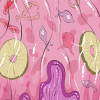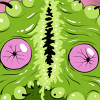BONUS MONSTER 26:
Ignorance Brainstorm
KRUNGLEWUNG
CLASS: BIOGARBAGE (DIREGARBAGE)
Free, additional supplementary monsters for the Mortasheen Tabletop RPG Core Rulebook, created by Jonathan Wojcik, additional writing and all gameplay stats by Bonnie Saucier. For use with the gameplay system by Morgan Mullins!
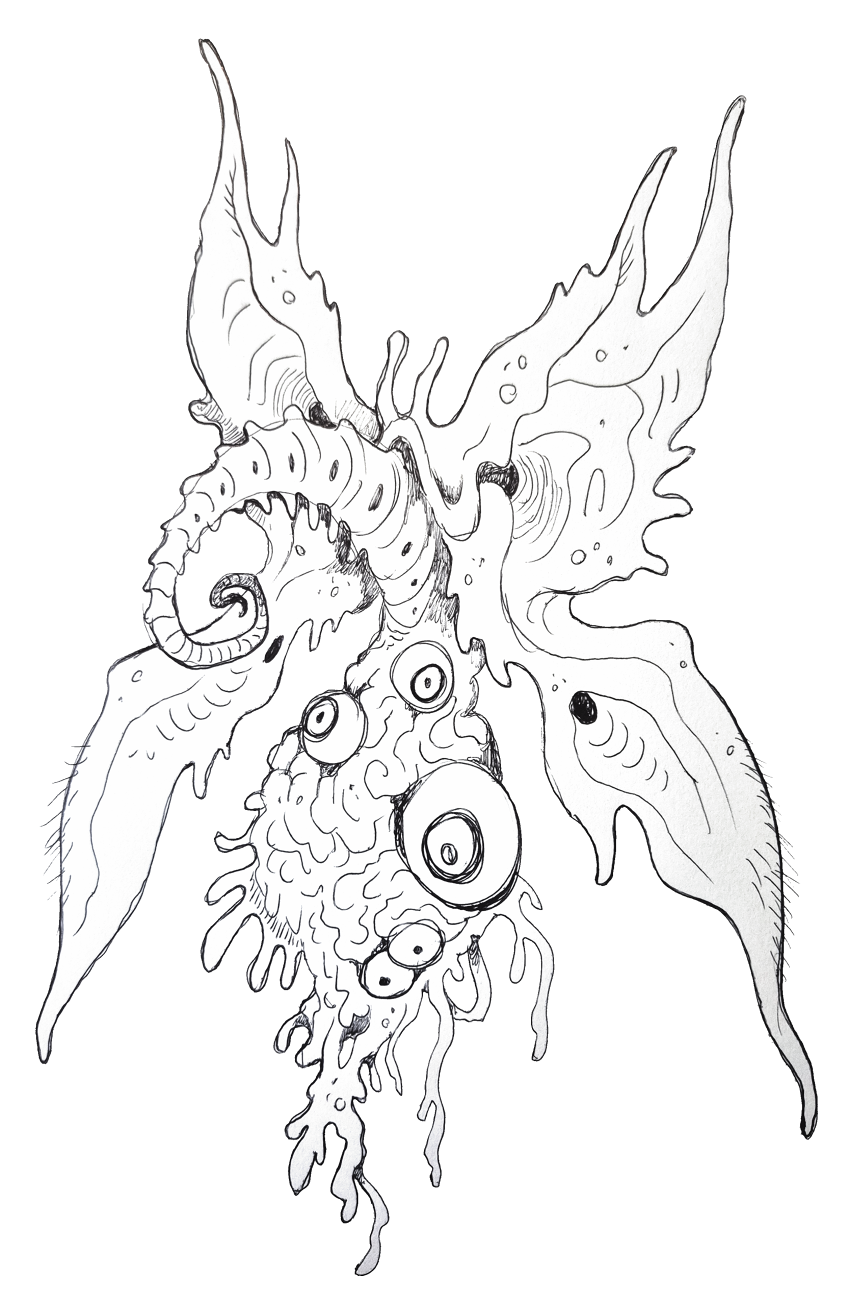
(Color Art Pending)
Description:
This monster's resembles a sagging, melting brain with large eyeballs of varying sizes. It dangles from a set of fleshy, butterfly-like "wings" that more closely resemble four mutated ears. A tapering spinal column curls out of the top like a butterfly's proboscis.
BIOLOGY:
A bizarre mutation that arises when a Skwunk dissolves a Bleevus, and the bubbling remains attract a hungry Flarmph.
The Krunglewung's thick, slowly flapping "wings" are mostly hollow, filled with the same putrid gases that keep a Flarmph aloft, and can be anatomically considered its "head" with faint remnants of soft skull plating deep within their shared canals. It is constantly producing and shedding its airy, foamy brain tissue, which adheres like frothy resin to organic surfaces for hours at a time. Until these tissues finally necrotize and slough away, their unstable neurons frantically invade any surrounding biomass like an amoebic plasmodium, desperately seeking connection to an active nervous system, and can reduce an intelligent organism to an almost catatonic state as they overwhelm its consciousness with their own nonsensical thought patterns.
The Krunglewung is mindlessly drawn to the screaming brain activity of its dying tissues in their temporary host, and it feeds almost exclusively by snaking its proboscis into the digestive tract of a catatonic subject - usually through the throat - to drink predigested material. If significantly starved, its Flarmph instincts may drive it to feed on other sources of liquid or semiliquid organic material with varying degrees of success.
A Krunglewung that falls into a liquid environment has no physical means of going airborne again, but floats idly with its air-filled wings spread across the surface, and may continue thriving in a nutrient-rich medium. As its tissues pollute its new environment, the drowned corpses of the unwary ensure a continuous energy supply.
BEHAVIOR:
A Krunglewung's powerful, long-range eyeballs are constantly observing its surroundings of their own independent volition, but coherent information only rarely survives the tangled journey through its rotting neural pathways, and the relatively stable but tiny sub-cortex at the base of its spine has precious little processing power of its own. It spends much of its time lazily afloat in the sky, often basking for days in the relative warmth of the same rising thermal as it watches the activities below with the rapt attention of an infant.
Concentrations of color and motion inexorably draw a Krunglewung closer, increasing the odds that it will stumble upon viable food sources. Though these monsters are quite rare, their highest concentration can be found over the Corpsen Sea, grazing on any dimly cognizant zombies they happen to infect. Zombies do not appear to recognize its tissues as a viable food source, though some Zomboids have learned that its sub-cortex is exceptionally dense and juicy...if they can find a way to extract it without touching the rest of its troublesome grey matter. The most effective method observed in feral Zomboids is to snag one of the monster's wings, pull it down carefully, then twist out the spine and neatly pluck free the edible core along with it. Once released, the Krunglewung will regenerate its missing portions in time, and over many such encounters, it may even dimly learn to exhibit more caution.
A Krunglewung is far less likely to mutate higher brainpower than most other monsters, and artificially enhancing its capacity for sapience is exceptionally challenging. The rare specimen possessed of steady mental clarity, often when its cortex has grown has universally adopted a pessimistic, nihilistic outlook, torn between a revulsion towards existence and a spiteful resolve to continue presenting an inconvenience to the "oblivious throngs" that are evidently all other self-aware organisms.
Concept Notes:
"Garbage beasts" used to be strictly 1:1 evolutions of the biogarbage class. For the book, they were renamed Diregarbage, and I decided to write them as "fusion" evolutions of three Biogarbage each, though that's not a rule they'll be sticking to. Some classics can't really be rationalized as fusions, and will be updated as-is someday, while others might represent combinations of only two, combinations of many more, or perhaps combinations of Biogarbage with non-Biogarbage. The introduction of a fusion system simply spares me the obligation of making a singular evolved form for every single monster in the class, gives their enhanced forms an excuse to get exceedingly bizarre, and also gives this class a fun gimmick of its own.There are seven regular Biogarbage in book one, but two of them - Flarmph and Bleevus - go unused by either of the book's two Diregarbage, both of which were really designed before the fusion system was conceived of. I'm confident their combinations make enough sense, especially with the addition of some brand new book-exclusive Biogarbage, but Krunglewung is officially the first Diregarbage created with that system in mind. Bonnie selected it out of various ideas and sketches I had, and came up with the entire idea of the infectious brain matter along with its name and stats.
Here are its three "ingredients," if you're new to all this or just need a refresher:
Bleevus - Flarmph - Skwunk
If you're a Skwunk fan and disappointed that it isn't visually obvious in Krundlewung - or in the other book exclusive fusion that utilizes it - don't worry! I think it's still a top contender for a more direct evolution someday, even if I keep those rare. Actually, Grobbidile is used in both of the book fusions, and it has a popular direct evolution already that we probably won't change. Both Skwunk and Grobbidile exist in constant cycles of destruction and rejuvenation, and I think there's a fun pattern only just now crossing my mind here. Maybe some especially unstable Biogarbage are just more prone to mutation than others, not only making them likely to "evolve" on their own, but making them common fusion catalysts?
This is the first "concept notes" to be about as long as the monster's bio. I guess I had a lot of feelings about this thingy!
GAMEPLAY BLOCK:
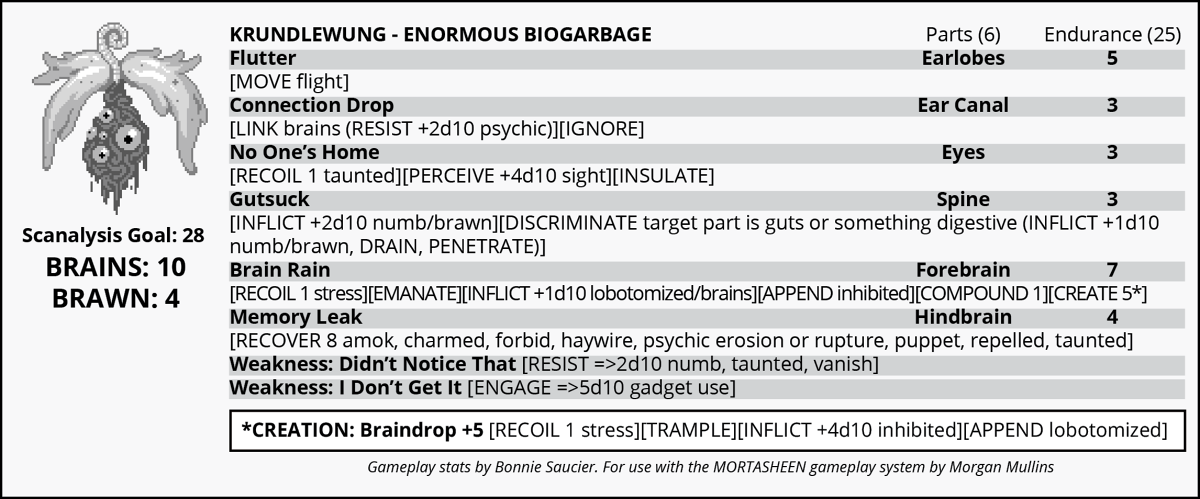
WAYS YOU CAN SUPPORT THIS SITE!
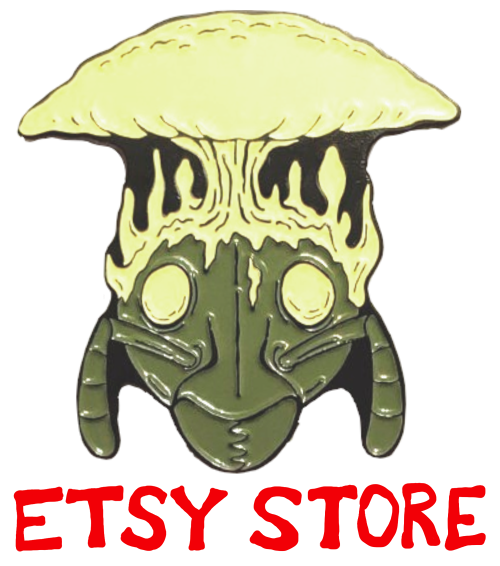
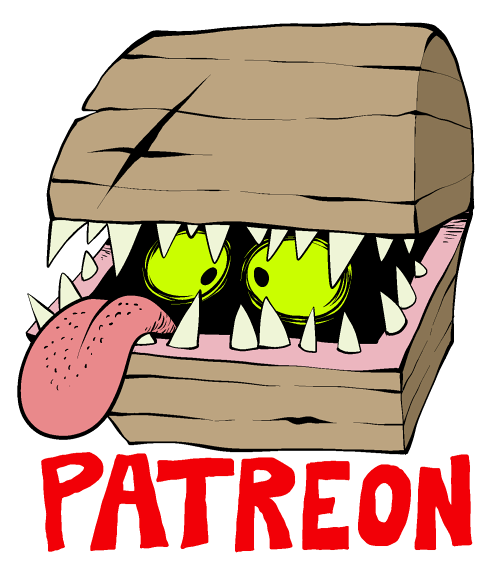

MORE:

